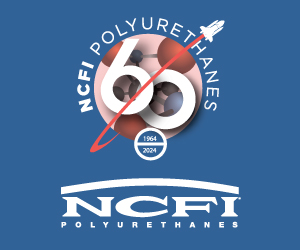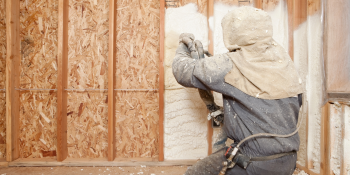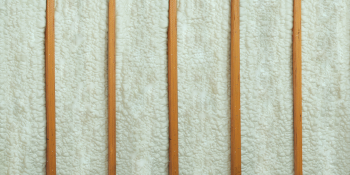Q&A Forums
Spray open and closed cell Post New Topic | Post Reply
| Author | Comments |
|---|---|
|
Joe Lynch
Posted: Mar 01, 2008 05:11 PM
|
Spray open and closed cell
I was wondering if any sprayers spray both open and closed cell. Obviously the closed cell has a higer insulation value( that is what I spray now). I was just talking to a sprayer in another part of my state, and he sprays an open cell foam. His logic is that he comes in at a lower price than CC and competes with wet spray cellulose and spider insulation at a similar price to thiers. He uses a metal panel he puts up to spray against on the wall cavity (first he puts up plastic film). This way he completely fills the wall cavity. He then hits the studs face with an air brush (scarfer). This almost makes sense to compete with other insulators in price. Any thots? (he has a video on youtube)
|
|
philip mullins
Posted: Mar 01, 2008 11:10 PM
|
tell this guy that you would like to meet with him and have a discussion. then when he shows up beat him till the whit meat shows. if his prices are competitive with the cellulose then he is a cut throat! and he will destroy the entire industry in ur area by working for beer money. oc prices should be about 20-30% less than cc. imagine what a customer thinks when they see ur bid at or near the industry standard. then his. they dont think that he is real cheep. they think that you are a crook. beet the hell out the guy and tell him to go back to lawn care. |
|
Gerry Wagoner
Posted: Mar 16, 2008 11:04 AM
|
That's your best suggestion, friend? Gerry C. Wagoner Ohio |
|
Ryan Slagel
Posted: Mar 28, 2008 01:39 PM
|
I like Troutkiller's suggestion, i have a big problem with guys being cut throats around here. in idaho. lol.... My question is how can you add all that labor of puting up plastic and hanging the panels, the cutting the foam off . and still be in the same price range as cellulose??????? |
|
Rob Granger
Posted: Mar 28, 2008 06:34 PM
|
Cellulose in my area sells for $ 1.30 a square - thats 18 cents per inch. That guy will put himself out of business sooner rather than later, so do not worry..... |
|
Robert Webster
Posted: Mar 29, 2008 10:13 AM
|
In regards to cost of SPF versus fiberglass I have a couple local contractors I work with a lot, and they both say that at a $1 per inch for cc 3" thick I'm just under 3 times the cost of fiberglass. Is this true in most of your areas or how do the rest of you come in comparison to fiberglass, and blow in?......................... As far as that cellulose guy putting himself out of business. The problem is theres five more guys ready to do the same thing when he is gone,,,,,,what do you do |
|
Michael Flander
Posted: Mar 31, 2008 02:25 PM
|
Hey Trout, I'm curious as to how you really feel about it? lol :). |
|
John Shockney
Posted: Apr 01, 2008 12:07 PM
|
The system you are talking about is called wall forming. There is a u-tube vidio showing the system, I experamented with the system and built forms, I was sent a letter telling me to stop useing the system unless I bought the forms from a company due to a patton pending. I found no practal advantage to wall forming due to reduced yeld of foam due to compression and incressed labor. The only way I found to reduce cost to the owner/builder is to let them do the prep and cleanup. Thanks Airpro |
|
Gerry Wagoner
Posted: Apr 03, 2008 07:14 PM
|
Hello friends: I would like to set forth some history that may be useful in understanding the recent rhetoric between open & closed cell foams. For 30-years, closed cell foam was the only kid on the block for roofing & insulation. It was a decent neighborhood, not perfect but decent. And it was growing. Timeline: ------------------ 1940's - Polyurethane Foam was developed by Otto Bayer. 1957 - First foam roof. It was used on a rail car with VERY primitive equipment. 50-60's - It was a machine developing time. `63 - Fred Gusmer built the first dedicated foam machine. 60's - was a time of experimenting with foams & coatings. 70's - was a time of refining fire issues with SPF. The energy crisis made foam more popular during this period. 80's - was a period of growth in the SPF industry. Now, let's talk about open cell. Until the late 80’s, open cell foam was used for packaging only. Closed cell SPF was the product of choice for sprayed insulation. Know why? It worked, and worked extremely well. In the late 80’s a Canadian company, began riding a wave of environmentalism that was cresting in North America. They moved into the neighborhood and demanded to be regarded. They developed a water-blown insulation foam, that was very soft, and only had about half of the R-value of closed cell foam (which was 7.14 at the time). The sole virtue of this product was – cost. Mark that. Some claim the water-blown aspect as an advantage. Perhaps. Perhaps not. I suppose that has a place in an eco-hyper market. In the Eighties, another company, Stepan, was experimenting with a water-blown closed-cell foam, which they demonstrated at the SPF Convention in Hollywood Florida -1989. It was interesting stuff, but it could not be used for roofs. They eventually scrapped the project after investing a lot of years into it. The water-blown half-pound also has several disadvantages which we will discuss. 1) It forfeits the built-in vapor barrier that closed cell foam possesses at 2”. The means that plastic film must be used to provide a vapor barrier. The new kid raised his voice and shouted that his half-pound didn't need a vapor barrier. Building code officials often think otherwise. 2) It has no strength. People who had already experienced a tornado or hurricane with their closed-cell homes knew firsthand what the silent strength of closed-cell foam could mean. It made a tremendous difference. Half-pound had all the strength of cellulose. 3) It has about 50% of the R-value of closed cell foams. Exceptions do exist, like APex who has a 1.2 water blown with an R-value of 5. (A word about Apex. When they moved into the neighborhood, they did their job quietly and got along with people. That's the proper way to become an asset to a community.) 4) The entire wall cavity had to be filled in order to squeeze out as much R-value as possible. Closed-cell foam only needs 2.5 – 3” in a 2x6 studwall to do its job well. 2.5" In 2x4 walls. This leave a dead air space for afterthought wires, and provides a bit of insulation itself (dead air space = 1.01) . To carve a place in the SPF market, this (Canadian) company adopted a highly aggressive marketing strategy that criticized the other kids on the block. This strategy seeks to do what Abraham Lincoln said couldn’t be done: “You cannot strengthen the weak by weakening the strong.” Nevertheless, through aggressive marketing, the water-blown half-pound is claimed (by themselves) to be better than closed cell in several unusual ways. This is simply not true. These claims were designed to overwhelm the four advantages of closed-cell foam. But the facts cannot be explained away, or marketed away. Closed-cell foam is inherently superior insulation for the reasons cited above. Shouting louder will not improve the content of your words or product. It only creates disturbances in the neighborhood. This rhetoric began an internal swordfight within the SPF industry, and it continues to this day (in varying degrees). To the discredit of closed cell foam, some (not all) began to stoop to the level of the half-pound company (companies by 1998) and fight back. Meanwhile, fiberglass sat back and chuckled, smug & happy. So where do we go from here? I realize that this sounds like a lamentation. I would like to make a suggestion. Open-cell foam should be marketed as a lower-cost alternative to closed-cell, for that is its lone virtue. This will keep open-cell foams (Two companies come to mind) from trying to profit off of closed-cell’s long years of success, and allow them to stand upon their own virtues, namely economic. This requires honesty. A place exists for both foams in our world. We like the added flexibility of using open-cell foam for attic envelopes as a lower-cost alternative. We also like the extra sound retention of open-cell (but prefer Ultra-Touch generally). It is good to have options in this industry. It is not good when new kids on the block scream louder just to convince the neighborhood that their poor grammar is proper English. Time will reveal that the best sales strategy is quiet confidence and honesty. This alone will help our neighborhood flourish. Gerry C. Wagoner |





























